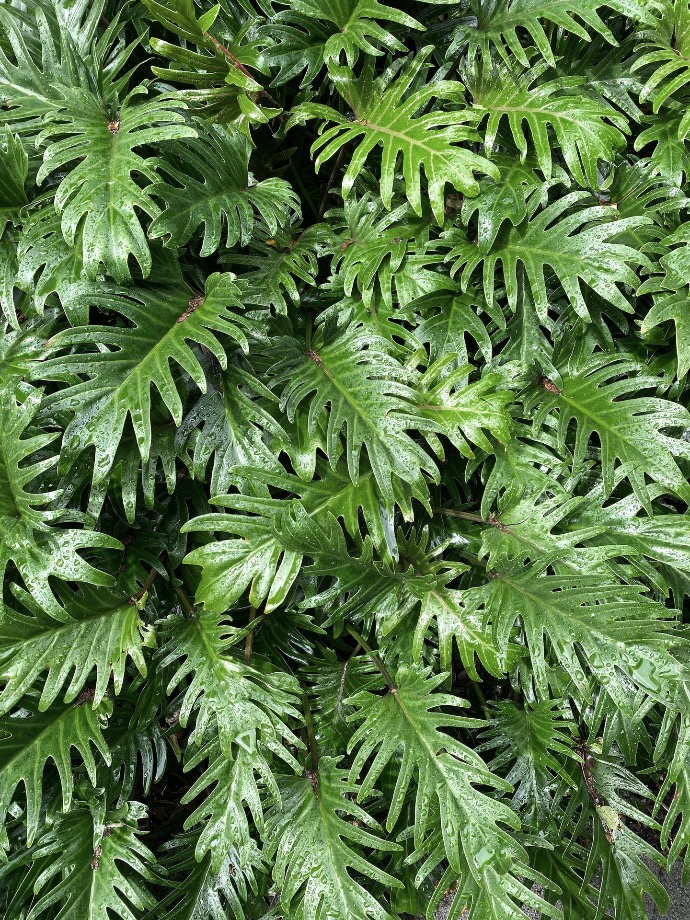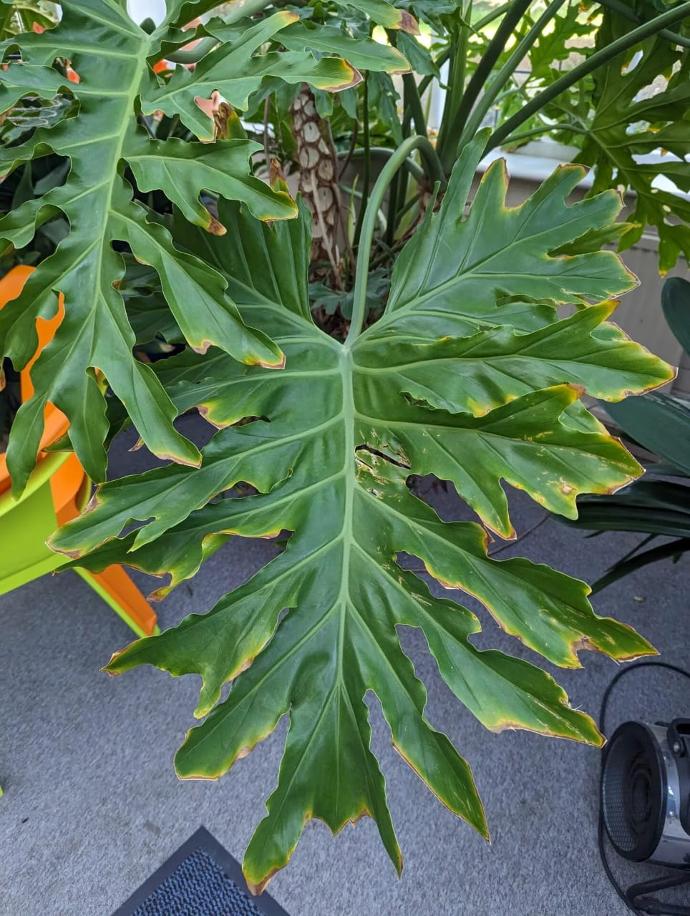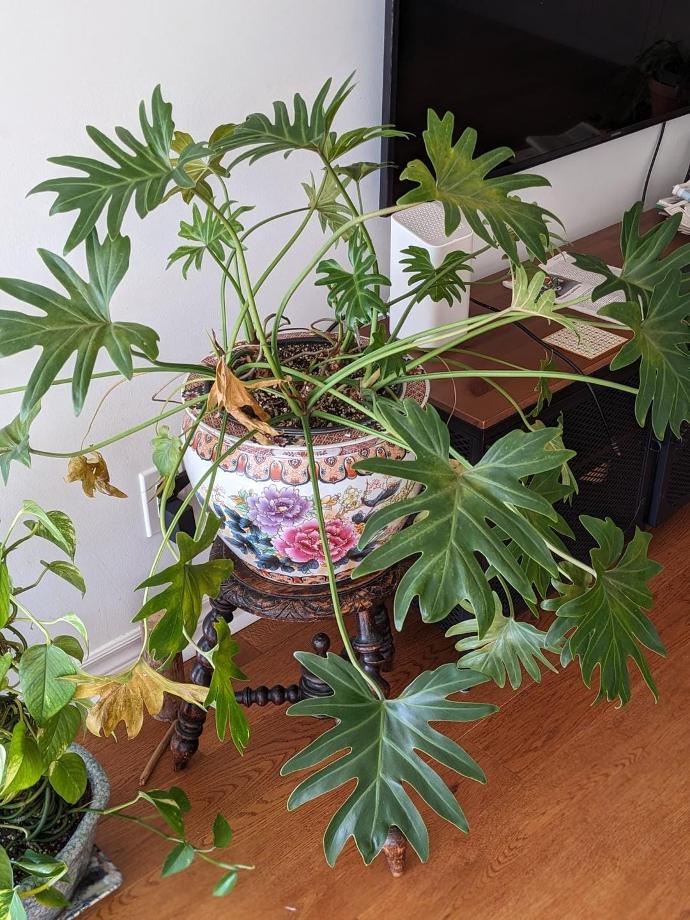Xanadu Plant
Xanadu, possibly referring to a specific plant variety, may have varying care requirements. Generally, provide well-draining soil, appropriate sunlight, and regular watering. Pruning and fertilizing practices may vary based on the specific characteristics of this plant.

Habit
Tree
Height
1 to 2 m
Growth
slow
Soil
Well Drained, loamy
Shade
Full Sun
Moisture
Moist
Edible
Yes
Medicinal
Yes
Origin
South America
Climatic Condition
Tropical, Subtropical
Temperature (°)
20°C to 30°C
Humidity (%)
60% to 80%
Potting media
50% Loam, 40% Sand, 10% Organic Matter
Fertilizers
Organic Fertilizer
Watering
Regular watering
Plant Weight
1 to 3 kg
Flowering Time
Spring to Summer
Soil Ph level
6.0 to 7.0
Water Ph level
6.0 to 7.0
Soil EC
0.5 to 1.0 mS/cm
Yield Per Plant
5 to 10 kg per plant
NPK ratio
20:20:20
life Span
10 to 20 years
Health Benefits
Ornamental, Air-purifying
Suggested Grow Media or Potting Mix ?
50% peat moss, 30% perlite, 20% compost
Suggested Fertigation/Fertilizers
Fertilize every 2 weeks with a balanced, water-soluble fertilizer.
Common Diseases and Remedies
Brown spot, Damping off.
Leaves turn yellow and drop from the plant . Necrotic spots appear on the leaves.
Avoid over watering and Remove the effected part.
HEALTH BENEFITS
· Primarily an ornamental plant, Xanadu is not commonly consumed.
· Improves indoor air quality by absorbing toxins.
Adds aesthetic appeal, which can enhance mental well-being.
What Is An Xanadu Tree?
The Xanadu plant, deductively known as Philodendron Xanadu, is a famous decorative plant valued for its rich, tropical appearance and simplicity of care. Local to Brazil, it has a place with the Araceae family, which incorporates other notable plants like the harmony lily and the Swiss cheddar plant. One of the most striking highlights of the Xanadu plant is its shiny, profoundly lobed leaves. These leaves can develop very huge, arriving at up to 4 feet (1.2 meters) in both level and width, making a thick, ragged appearance. The plant's reduced development propensity makes it ideal for both indoor and open air development, adding a dash of tropical energy to any space.

What Are The Different Types Of Xanadu Plants?
1. Philodendron xanadu
This is the most widely recognized plant alluded to as "Xanadu." It is a famous decision for indoor or open air finishing because of its alluring foliage and simple consideration prerequisites.
2. Philodendron 'Winterbourn
This is one more assortment of Philodendron with profoundly lobed, reflexive green leaves that look like those of the Xanadu plant. It is once in a while likewise called "Xanadu."
3. Philodendron bipinnatifidum
Otherwise called the tree philodendron or split-leaf philodendron, this plant has enormous, profoundly lobed leaves that can look like those of the Xanadu plant, particularly when youthful.
4. Thaumatophyllum bipinnatifidum
This plant was previously delegated a Philodendron and is still normally alluded to in that capacity. It has enormous, profoundly lobed leaves and is at times called "Xanadu."

How to Care Xanadu Plant ?
1. Location
The Xanadu plant (Philodendron xanadu) is local to Brazil and is appropriate to warm, heat and humidities. It flourishes in areas with splendid, roundabout light and high mugginess. It very well may be filled outside in USDA toughness zones 10-11, where temperatures don't decrease underneath 30°F (- 1°C). In cooler environments, the Xanadu plant is much of the time developed as a houseplant or in compartments that can be moved inside during colder months. When developed inside, it ought to be set close to a window with sifted daylight and avoided drafts or direct intensity sources.
2. Sunshine
The Xanadu plant (Philodendron xanadu) flourishes in splendid, roundabout daylight. It ought to be put close to a window where it can get sifted light or where it gets splendid, roundabout light over the course of the day. Direct daylight can singe the leaves, so it's ideal to try not to put it in direct daylight, particularly during the most sultry pieces of the day. Assuming you notice the leaves becoming yellow or brown, it very well might be an indication that the plant is getting a lot of direct daylight and should be moved to a more concealed area.
3. Soil
The Xanadu plant (Philodendron xanadu) favors a well-depleting, peat-based preparing blend. A blend intended for aroids or tropical plants functions admirably. You can likewise make your own blend by consolidating peat greenery, perlite, and a limited quantity of fertilizer or very much decayed compost. The dirt ought to be kept reliably soggy yet not waterlogged, as excessively wet circumstances can prompt root decay. It's likewise smart to repot the plant each 2-3 years to invigorate the dirt and give more space to development.
4. Hydration
The Xanadu plant (Philodendron xanadu) likes to be kept reliably soggy however not waterlogged. Water the plant completely when the top inch of soil feels dry to the touch, permitting abundance water to deplete away uninhibitedly. It's significant not to allow the plant to sit in water, as this can prompt root decay. During the developing season (spring and summer), you might have to water all the more habitually, while in the cold weather months, when development dials back, you can decrease the recurrence of watering. Moreover, clouding the plant routinely or putting it on a plate loaded up with rocks and water can assist with expanding dampness, which the plant appreciates.
5. Nourishment
Utilize a fair, water-solvent manure planned for houseplants. Weaken the compost to around 50% of the suggested strength and feed your plant each 4 a month and a half during the developing season (spring and summer). Decrease taking care of or stop through and through in the fall and winter when development dials back.

6.Issues
One of the most widely recognized issues is overwatering, which can prompt root decay. Ensure the dirt is well-depleting and permit the top inch of soil to dry out prior to watering once more.
1. *Air Purification*: Like different plants, the Xanadu plant decontaminates the air by retaining toxins like formaldehyde, benzene, and xylene, further developing indoor air quality.
2. *Aesthetic Appeal*: With its lavish, tropical foliage and reduced development propensity, the Xanadu plant adds a dash of excellence and style to any space. It is much of the time utilized in finishing to make a rich, tropical look.

FAQs About Growing Xanadu
1. how to keep up with Xanadu plant ?
Spot your Xanadu plant in splendid, aberrant light. Keep away from direct daylight, as this can burn the leaves.
2. what are the uses of Xanadu plant ?
The lush, tropical foliage of the Xanadu plant makes it a popular choice for indoor decoration. It adds a touch of greenery and elegance to any room.
3. can I grow Xanadu plant indoor?
Place the plant in a location where it receives bright, indirect light. Avoid direct sunlight, as this can scorch the leaves.
4. which pot is best for growing Xanadu plant?
Choose a pot that is 1-2 inches larger in diameter than the plant's current pot. Avoid using a pot that is too large, as this can lead to overwatering and root rot.
5. from where can I shop Xanadu plant?
Visit your local nursery or garden center, as they often carry a variety of indoor plants, including Xanadu plants.

